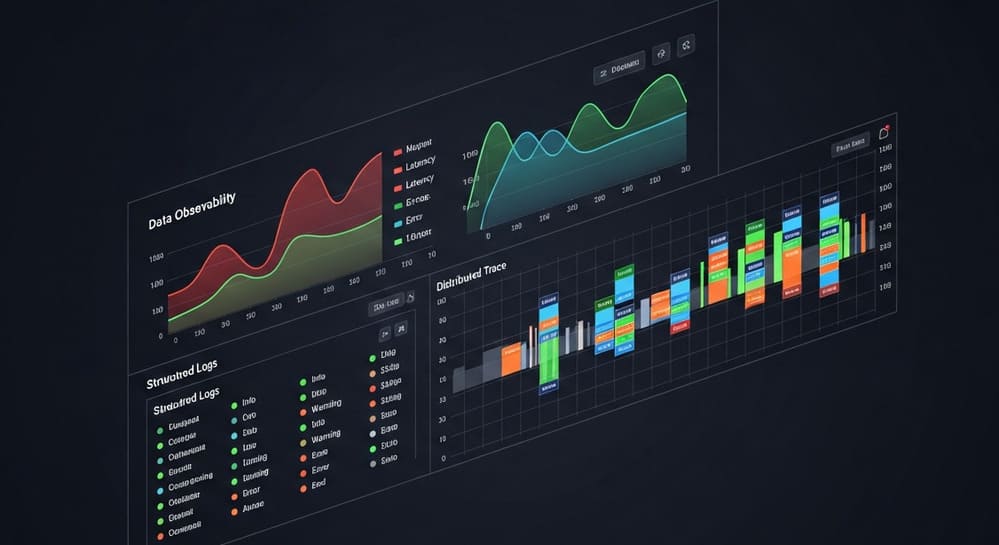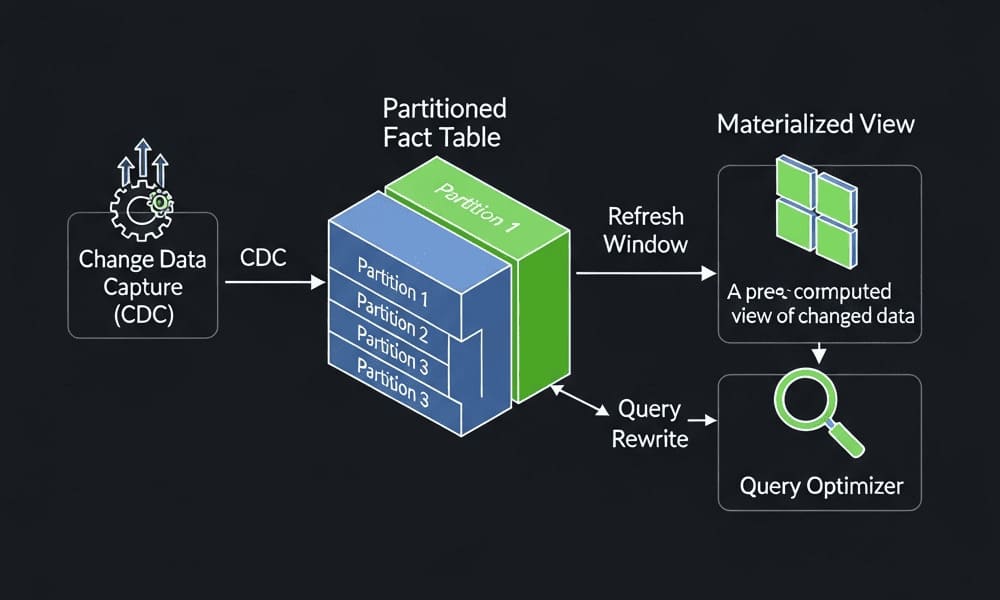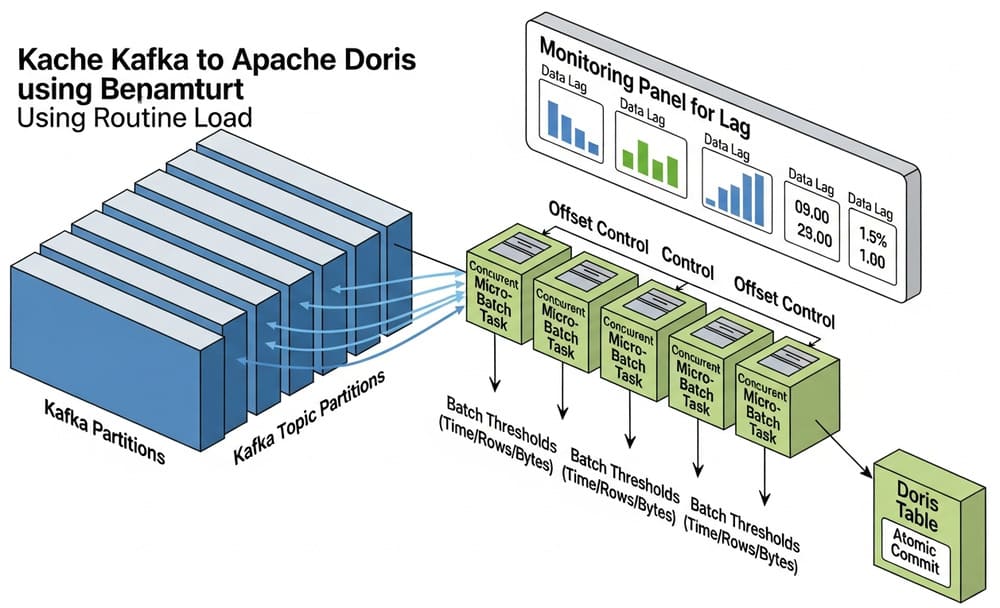Azure SQL Database for Data Engineers: A Practical, No-Nonsense Guide to Design, Performance, and Cost
Meta description (159 chars):
A practical guide to Azure SQL Database for data engineers—architecture, sizing (vCore vs DTU), indexing, partitioning, HA/DR, security, cost control, and pitfalls.
Why this matters
You’re asked to “move the reporting DB to Azure” and “keep costs flat.” That’s vague. Azure SQL can be brilliant—or a money sink—depending on choices you make in week one: service model, sizing, storage, HA, and schema design. This article gives you the battle-tested path for middle-level data engineers who want reliable performance without surprise bills.
The Azure SQL family (choose deliberately)
| Scenario | Azure SQL Database (single/elastic) | Azure SQL Managed Instance | SQL Server on Azure VM |
|---|---|---|---|
| Best for | SaaS-style, isolated DBs; modern apps | Lift-and-shift from on-prem SQL Server with minimal change | Full OS control or niche features |
| Compatibility | Database-level features | Highest near full SQL Server instance parity | Full parity (you manage everything) |
| Ops burden | Lowest | Low–Medium | Highest |
| Scale | Serverless, vCore, Hyperscale | vCore | VM sizing |
| Cross-DB features | Limited (workarounds) | Yes (linked servers, agent, etc.) | Yes |
Default pick for greenfield apps: Azure SQL Database (serverless or provisioned).
Default pick for legacy apps: Managed Instance to minimize refactoring.
Sizing: DTU vs vCore (pick vCore unless forced)
- DTU = blended measure (CPU+IO+memory). Simple, but opaque. Harder to predict and compare.
- vCore = explicit compute + memory + storage. Transparent, easy to right-size, supports Azure Hybrid Benefit and Reserved Instances.
Rule of thumb: Choose vCore. Use serverless for bursty/idle workloads; provisioned for steady, high-duty workloads.
Key architectural options you actually use
1) Compute models
- Provisioned vCore: Always on. Predictable performance/cost.
- Serverless vCore: Auto-scales within bounds; auto-pause to zero when idle. Ideal for dev/test, intermittent jobs, and internal tools.
- Hyperscale: Log-service + page server architecture, near-instant read scale-out, fast restores. Use when DBs > 1 TB or need rapid growth.
2) High availability & DR
- Zone-redundant HA for resilience within a region.
- Active geo-replication (up to 4 readable secondaries) for DR and read scale.
- Point-in-time restore from automatic backups (typically 7–35 days).
- Failover groups for coordinated failover across regions (apps survive region loss with stable listener endpoints).
3) Multi-tenant patterns
- Elastic pools: Many small/variable DBs? Share compute.
- One DB per tenant + pool = noisy neighbor isolation and cost efficiency.
Performance engineering: what actually moves the needle
Model for the queries you’ll run (not the data you dream of)
- OLTP patterns → narrow, normalized tables, targeted nonclustered indexes.
- Analytics/reporting → clustered columnstore + partitioning; precompute aggregates in stage tables.
Indexing strategy that avoids chaos
- Keep one clustered index (usually on an ever-increasing key to minimize page splits).
- Add narrow nonclustered indexes for critical lookup predicates and JOIN keys.
- For analytics tables, prefer clustered columnstore and only very selective nonclustered b-tree helpers if needed.
- Revisit indexes after enabling Query Store and reviewing top regressed queries.
Create a selective covering index:
-- Target high-cost query: WHERE Status='Open' AND CreatedAt>=@d
CREATE INDEX IX_Tickets_Status_CreatedAt
ON dbo.Tickets (Status, CreatedAt)
INCLUDE (AssignedTo, Priority);
Partitioning that’s worth the overhead
Partition by date (e.g., CreatedDate) for large tables to:
- Enable partition elimination in scans.
- Support sliding window archiving and faster maintenance.
-- Range by month partitioning
CREATE PARTITION FUNCTION pf_MonthlyDate (date)
AS RANGE RIGHT FOR VALUES ('2024-02-01','2024-03-01','2024-04-01');
CREATE PARTITION SCHEME ps_MonthlyDate
AS PARTITION pf_MonthlyDate
ALL TO ([PRIMARY]); -- In Hyperscale, map to filegroups if needed
-- Use in table definition
CREATE TABLE dbo.Events
( EventId bigint IDENTITY PRIMARY KEY,
CreatedDate date NOT NULL,
Payload nvarchar(max) NULL
) ON ps_MonthlyDate(CreatedDate);
Columnstore when scans dominate
- Use clustered columnstore for wide fact tables with scan-heavy analytics.
- Keep OLTP hot tables in rowstore; or split: rowstore for hot path, columnstore for historical snapshots.
-- Convert a large fact table to columnstore
CREATE CLUSTERED COLUMNSTORE INDEX CCI_FactSales ON dbo.FactSales;
Parameter sniffing & plan stability
- Turn on Query Store and Automatic Tuning (force last good plan).
- Use OPTION (RECOMPILE) only for truly volatile parameter distributions.
- Consider OPTIMIZE FOR hints when cardinality skews are stable.
Security & networking (non-negotiables)
- Azure AD authentication for users and apps; assign least-privileged roles.
-- Create contained user from an Azure AD group
CREATE USER [DataEngineers] FROM EXTERNAL PROVIDER;
ALTER ROLE db_datareader ADD MEMBER [DataEngineers];
- Transparent Data Encryption on by default; rotate keys with Key Vault if required.
- Always Encrypted for sensitive columns (client-side encryption).
- Private endpoints (Private Link) to keep traffic off the public Internet.
- Defender for SQL for threat detection; Auditing to Blob/Log Analytics for traceability.
Observability you’ll actually use
- Query Store: Find top regressed queries, compare plans, pin a stable plan if needed.
- Automatic tuning: Enable
FORCE_LAST_GOOD_PLANand automatic index management where safe. - Wait stats & DMVs: Check CPU, IO, and memory bottlenecks; verify data vs. log IO caps.
- Azure Monitor + Log Analytics: Alerts for DTU/vCore utilization, storage latency, connection errors.
- Workload Insights (portal): Surfacing hot queries and recommendations for many DBs.
Cost control playbook (real-world)
- Prefer vCore with reservations (1–3 years) if baseline is predictable.
- Serverless with auto-pause for sporadic workloads (dev, QA, ad-hoc analytics).
- Elastic pools when N small DBs each have uneven peaks.
- Right-size storage; avoid over-provisioning IO.
- Read scale on secondaries only when actually used; otherwise, turn it off.
- Automation: Nightly scale down non-prod; weekend pauses on serverless.
Common pitfalls (seen in the wild)
- Assuming on-prem defaults apply. Tempdb behavior, IO caps, and maintenance windows differ.
- Cross-DB dependencies in Azure SQL Database. If you need SQL Agent, linked servers, or instance-level features, use Managed Instance.
- Treating columnstore as magic. It’s incredible for scans, mediocre for point lookups and heavy singleton updates.
- Over-indexing. Extra indexes slow writes and inflate storage. Measure with Query Store, not vibes.
- Ignoring network egress. Pulling lots of data out of Azure can be the silent bill.
Example: secure ingestion from Blob Storage (no gateway VM)
Use database-scoped credential + OPENROWSET BULK to stage data directly.
-- 1) Create a master key (once per DB)
CREATE MASTER KEY ENCRYPTION BY PASSWORD = 'Strong#Passw0rd!';
-- 2) Create a credential mapped to a storage SAS (recommended) or MI
CREATE DATABASE SCOPED CREDENTIAL [BlobCred]
WITH IDENTITY = 'SHARED ACCESS SIGNATURE',
SECRET = 'sv=2024-01-01&ss=bfqt&srt=sco&sp=rl...'; -- SAS token
-- 3) External data source
CREATE EXTERNAL DATA SOURCE [BlobDS]
WITH ( TYPE = BLOB_STORAGE,
LOCATION = 'https://myaccount.blob.core.windows.net',
CREDENTIAL = [BlobCred] );
-- 4) Load into a staging table
CREATE TABLE dbo.StageOrders
( OrderId int, CustomerId int, Amount money, CreatedAt datetime2 );
INSERT INTO dbo.StageOrders
SELECT *
FROM OPENROWSET(
BULK 'container/in/orders_2025_10_01.csv',
DATA_SOURCE = 'BlobDS',
FORMAT='CSV', PARSER_VERSION='2.0', FIRSTROW=2
) WITH (
OrderId int, CustomerId int, Amount money, CreatedAt datetime2
) AS rows;
Quick decision guide
- Greenfield OLTP app, < 1 TB, predictable load: Provisioned vCore, Azure SQL Database.
- Bursty internal tool, idle most of the day: Serverless vCore + auto-pause.
- > 1 TB and fast growth / fast restore needs: Hyperscale.
- Legacy app with SQL Agent, cross-DB, CLR: Managed Instance.
- Lots of tiny tenant DBs: Elastic Pool.
Best practices checklist
- Pick vCore; document initial sizing assumptions.
- Enable Zone-redundant HA, Query Store, Automatic Tuning.
- Use AAD auth; Privates endpoints; TDE on.
- Design indexes for top queries; revisit monthly.
- Partition by date for very large tables.
- Centralize logs/metrics in Log Analytics; alert on CPU, IO, fails.
- Use PITR and test restores quarterly.
- Review costs weekly; automate scale down for non-prod.
Internal link ideas (official sources only)
Link to the corresponding Microsoft Learn / Docs pages for:
- Azure SQL overview & service comparison
- vCore vs DTU purchasing models
- Hyperscale architecture
- Serverless compute & auto-pause
- Automatic tuning & Query Store
- Elastic pools
- Geo-replication & failover groups
- Azure AD authentication for Azure SQL
- Private Link for Azure SQL
- Auditing & Defender for SQL
- Point-in-time restore and backup retention
(Use the official Microsoft Learn pages for each topic above.)
Summary
Azure SQL is not “SQL Server in the cloud.” It’s a spectrum of options. Get the service model and sizing right, then enforce index discipline, date partitioning for big tables, AAD + Private Link, and Query Store + Automatic Tuning. Keep an eye on IO caps and turn features into measurable choices (alerts + cost reports). Do that, and Azure SQL behaves—fast, predictable, and affordable.
Call to action
Want a 30-minute sanity check on your planned architecture and sizing? Share your workload profile (peak TPS, largest tables, latency goals), and I’ll map you to a concrete Azure SQL design with estimated monthly cost and growth headroom.
Image prompt
“A clean, modern data architecture diagram showing Azure SQL Database with zone-redundant HA, geo-replication to a secondary region, serverless vs provisioned compute, Hyperscale page servers, and Private Link—minimalistic, high contrast, isometric 3D style.”
Tags
#AzureSQL #DataEngineering #SQLServer #CloudArchitecture #PerformanceTuning #Hyperscale #Serverless #AzureSecurity #CostOptimization
More interesting articles to read:
“Loading Data the Cloud-Native Way: OPENROWSET from Blob Storage to Azure SQL at Scale”
Intent: ingestion; SAS vs MI auth, batching, retries, and idempotency.
“Serverless vs Provisioned vCore in Azure SQL: Performance, Cold-Start, and Cost Traps”
Intent: comparison + buying decision; includes measured cold-start latencies and workload profiles.
“Azure SQL Hyperscale Deep Dive: When Your OLTP Tables Hit a Billion Rows”
Intent: scaling; partitioning + columnstore patterns; restore/clone scenarios.
“Elastic Pools for Multi-Tenant SaaS: Sizing, Noisy Neighbor Control, and Automation”
Intent: architecture; schedule-based scaling; query governor patterns.
“Query Store Playbook: Finding Regressions and Forcing the Right Plan in Azure SQL”
Intent: performance troubleshooting; step-by-step with screenshots.
“Secure by Default: AAD Only, Private Endpoints, and Auditing for Azure SQL”
Intent: security checklist aligned with least-privilege and zero trust.
“From SQL Agent to Managed Workflows: Job Orchestration Choices for Azure SQL”
Intent: migration playbook; Elastic Jobs, Logic Apps, Functions, Automation.




